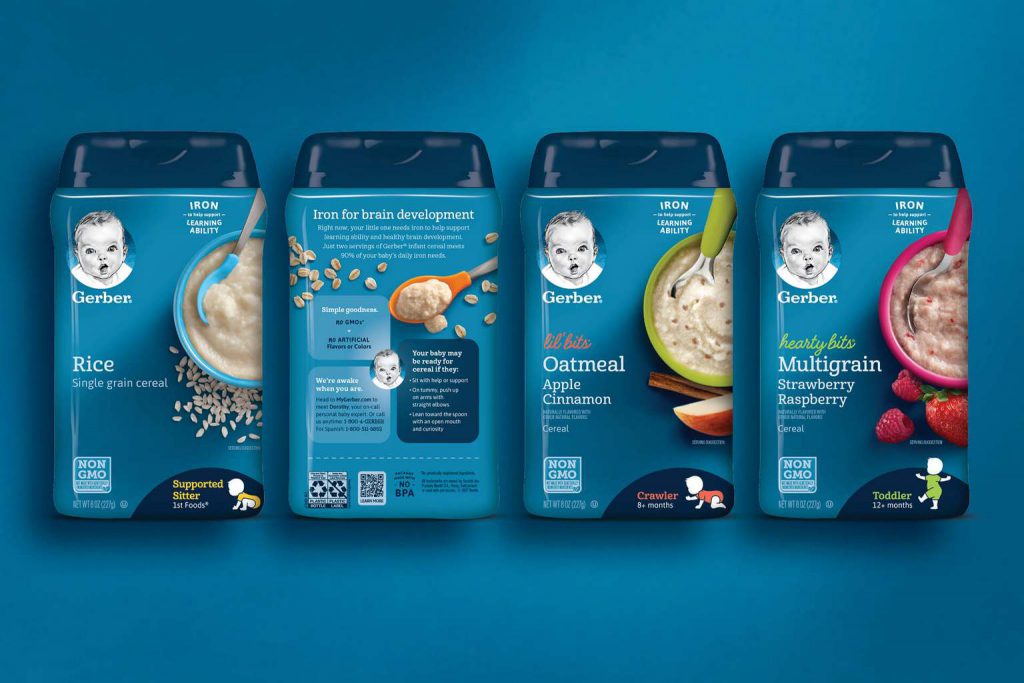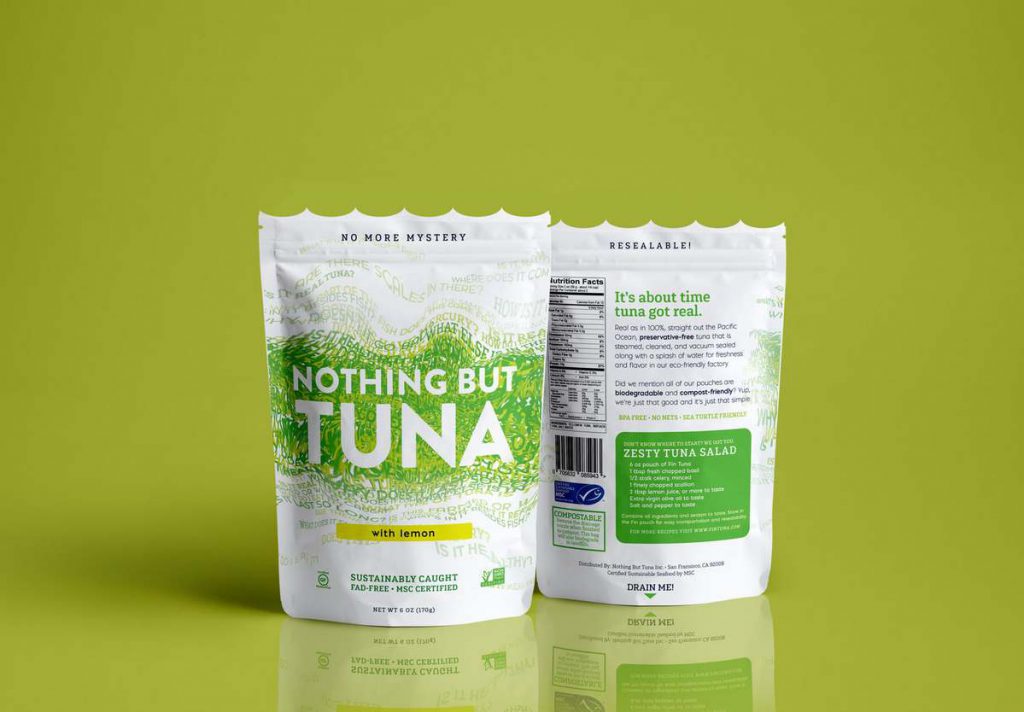Colored Packaging helps in branding and marketing since colors represent your visual brand appearance. According to research, 80% to 85% of people purchase products with impressive color. This figure shows how colors influence branding and marketing strategy. Colored boxes awaken emotional feelings, trigger your target audience, and help make buying decisions.
Because a brand’s message can be elevated with the right color combination, the wrong palette can confuse and even repel consumers towards another option, depending on the brand. That’s why the color selection is essential in packaging to have your personality. Choosing an effective color scheme that will impress your buyers to become a customer again matters.
For example, brighter colors tend to reduce the seriousness of packaging, black adds sophistication to any packaging, and grey or brown makes the packaging conservative or masculine. While pink adds a feminine touch, and also red draws attention. Likewise, shade and tint also play a role. So, different hues influence human behavior and emotion in multiple ways.
But, how do you pick a palette that suits your brand, describes your product, helps you build a unique identity, and appeals to your customers? Well, with that in mind, these are some general tricks that will keep you on track while picking a perfect color scheme to make practical colored mailer boxes, that will resonate with your brand or business.
How Using Colored Packaging Benefits Business In Branding & Marketing
As color is the visual appearance of your band’s product plays a vital role in Branding and also acts as a silent marketing agent to advertise your items on store shelves, market places, boost your visibility and generate sales. Because color evokes feelings, packaging color schemes can induce emotions and attitudes about the product the brand is out to sell.
More so, even if the consumer knows nothing about the product. This impacts purchasing behavior. Suffice it to say, if you show people burgundy, they’ll generally think refined — if you show them black, they think sophisticated. As a rule of thumb, a person’s response to a particular color is triggered involuntarily and is driven by psychology.
From the perspective of a design developer, color — a visual representation of your brand — is an integral part of product packaging. It can trigger thoughts, feelings, and emotions about your product; and, directly impact the purchasing decision. That’s because 85% of consumers buy products based on color. Thus, picking the right color or colors for packaging matters.
Resource Reference: #10 Dark UI Background Design Best Practices For Webmasters
As an example, white is a packaging color that is often used to convey that the product is simple, safe, and traditional. Perse, Apple always highlighted the simplicity of their devices and all iPhone or iPad packaging is white. In layman’s language, white color is often accented with other colors to enhance or change the perception. So, why does packaging color matter?
Well, here we have shortlisted some benefits of colored boxes to be sure of your brand’s identity among your competitors. As well as serve as another way to increase your conversion rates when trying to utilize packaging in marketing.
1. Increased Brand Recognition
Brand recognition is essential to stay unique in a crowded environment. People will recognize your brand when you use a suitable color scheme parallel to your brand’s core colors and give your customers an impressive overall look. As your brand logo is your identity, the same as your custom packaging color combination is also your identity.
About 80 % of customers can recognize your items from far away from the shore shelf to acknowledge your product through packaging color. For example, people recognize Mcdonald’s through their red and yellow core color combination. So these two colors make Mcdonald’s items more recognizable.
2. Satisfactory Customer Experience
Customer satisfaction is quite essential to make your brand more successful. When people receive their product from any online store, before they see the product, the first thing is your packaging color and how much your customers will be fascinated and satisfied with your packaging.
Choosing the right combination of colors on your box will improve the customer’s unboxing experience. While unboxing, when customers find effective colors on a box, it will leave a lasting impression on the buyer’s mind.
3. Enhanced Product Visibility
Effective colors are more prominent on the store shelf, which will increase your product visibility.
You can use different colors like:
- Bright ( Red, blue, orange, Green)
- Light ( White, sky blue, peach)
- Nude colors
- Black with white background
- Natural colors palettes
- Matte colors
- Gradient.
All these colors give you the option to make a minimalist packaging design with a light color scheme and also a creative design with a bright color combination to be prominent on the shelf of retail stores.
4. Differentiation From Competitors
To stay competitive in the market, you have to differentiate yourself from your competitors. In this way, to bring uniqueness to your packaging, you can get help from colored box packaging to pack your items effectively.
Custom-colored boxes are the best way to communicate differently with your target audience to capture their attention and make your brand distinctive. You can choose bright and light colors to create a unique effect on the packaging. Differentiating yourself is the best way to keep yourself standing out from the crowd.
5. Versatile Product Design Options
To create a variety of designs on your box, you can try eco-friendly packaging ideas and many different schemes for a variety of product packaging. As there are two types of color palettes:
- Monochromatic Color Palette: The concept of monochromatic color is a color scheme that uses a single color tint as the base to make different shades, effects, and hues found within an image so that shadings of color are varied by making changes to the saturation and brightness of the color tint that is used as a base.
- Holographic Color Palette: On the other hand, you can use holographic color schemes that use different colors to create a holographic effect on the box. Holographic colors are formed by filtering light in a way similar to a prism, so different wavelengths are displayed depending on the angle at which the light is hit.
So, what is the best way to choose a palette that suits your brand, describes your product, gives you a unique identity, and attracts your target audience in a way that is pleasing to the eye? There are some practical tips that you can apply while selecting a color combination to make your blackmailer boxes, more perfect for Branding and visually appealing.
For an effective color scheme;
- Think about your customer
- Always stick to your brand’s core color
- Represent your product’s contents.
- Keep your brand’s color distinct from your competition.
- Shortlist your goals that show for what type of packaging you are deciding on color.
Technically, some of these options make your strategic plan for your marketplace products packaging and goods packing look appealing and distinctive and make your brand identity outsmart others. With colored packaging, you can brand your product items with your own unique color box design. You’ll stay relevant, and unique, and convert more leads to buyers.
The Best Practices While Choosing The Right Product Packaging Colors
At all costs, in terms of product packaging, a color such as yellow suggests originality, innovation, and fun. Packaging in Yellow is generally targeted at children and adolescents. It is an excellent option for products that aim to make people happy.
As a rule of thumb, Consumer Buying Behavior tells us that consumers are influenced by packaging colors. When picking the most suitable shade for your product packaging, you need to keep several things in mind, be guided by these examples:
1. Have your target customer in mind
Your consumers should be able to connect with the colors you choose. Keep the target market in focus. Understand their needs and their motivation. What is their age, gender, economic status, and education? For example, McDonald’s classic red and yellow color represents energy and youthfulness that their target audience can relate to.

White is a packaging color that is often used to convey that the product is simple, safe, and traditional. For instance, Apple always highlighted the simplicity of their devices and all iPhone or iPad packaging is white. White is often accented with other colors to enhance or change the perception.
2. Represent your products effectively
At times, you want the packaging to tell the consumer about the contents of the products. For example, the color of the shampoo bottle might give the buyer a hint about its composition.

When it comes to product packaging, blue is one of the safest colors to use, irrespective of the age or gender of the potential customer. Another way to view this is to think of blue as boring, owing to its reliability and common use. You’ll have to think about your potential customers before going ahead with blue. Choose the right shade of blue to allow you to target a niche.
Generally, darker shades of blue appeal to older audiences whereas lighter or more vibrant hues are for younger customers.
3. Outdo what your competitors are doing
You don’t want your product to simply blend on the shelf but rather stand out. By choosing a color that’s unique or different from your competition you have a better chance of your product being noticed and remembered.
For example, two leading soda companies Coca-Cola and Pepsi have contrasting primary colours red vs blue. There are ways to decode a competitor’s packaging colors to help you make a decision as you can see from this image.

Red can stand for a lot of things. It really depends on the shade of red you are using. Darker shades are linked with products that are luxurious and professional whereas lighter shades are associated with products that are lively, and energetic, but can be thought of as having a lower market value. Often gold or silver embellishments can help in lifting the perceived value.
4. Communicate the purpose of your products
The color should subconsciously communicate the message you want to send buyers. Do you want them to think about the product as comforting or fun? Is the product related to wellness or security? Does it evoke a sense of luxury or sophistication? For example, Apple’s classic white color makes it appear premium.

Generally, black is used for high-end products, and the color conveys a sense of luxury. It evokes class and elegance. Like white or grey, black can also be accentuated with other colors. Metalized gold or silver printing on matte black packaging creates an expensive look.
5. Keep your business branding in mind
Don’t lose out on communicating your brand’s voice. Your brand story should flow seamlessly through packaging colors and design. Do you want to reveal a quality about your organization? Is your brand professional, fun, or rebellious?

For instance, T-mobile decided to adopt a hot pink logo when most other mobile service providers opted for black, blue, and red hues— making it different and bold.
6. Consider your basic cultural preferences
Colors have cultural meanings attached to them. Understand your consumers’ culture and heritage to come up with color combinations. For example, the color red represents good luck in China. Your colors should gel well with the packaging design and the font you choose. Although it might seem obvious, it doesn’t take much to get too creative and go overboard.
The fonts you choose also send across a message to your buyers and the colors should resonate with this message.

Green has been a staple color for eco-friendly, natural, or healthy organic products. Like with red, darker shades of green are often linked to more luxurious products whereas muted shades are used for products associated with safety or nutrition.
7. Stick to your core business colors
While experimenting is great when packaging a new product, try to maintain color consistency and brand identity for the best results. This means consumers should be able to recognize your brand no matter what the packaging or colors. For example, when Maaza came out with new packaging for their bottles, they still maintained the traditional yellow and red.
Turquoise is a calming color. It conveys clarity of thought. Turquoise is a great color choice for health-related products or even cleaning products because it symbolizes cleanliness and purity without being too sterile.
8. Include a mix of product design options
You could also maintain consistency through tint and shade. While there are a lot more factors to be considered, like printing tech, the nature of the printing surface, or the print finish, choosing packaging colors is a careful decision to be made. And this decision cannot be made without understanding what your audience subconsciously associates with popular colors.

Psychology associates orange with exploration, extroversion, confidence, and optimism. However, different shades of orange have different meanings. Orange is a difficult color to work with. But when done right, it can do your brand wonders.
Choosing Your Business Colored Packaging Palette By Specific Industry
Keep your customers and brand at the forefront when choosing packaging colors. If you’re going all out with re-branding or creating packaging for a new product, mood boards can help greatly. If you want to deep dive and understand packaging colors, font, and dimensions used by other brands or want to compare designs, a free artwork proofing tool can also help.
In most cases, products for children or products with milk extracts make use of white packaging. Similarly, Canon uses red and white in its camera and printer retail packaging. The retail packaging of Casio watches uses vastly different colors. They use blue for their low-cost line-up, black for the more expensive series, and white for women’s watches. Learn more below:
Additionally, most brands also use grey for their vintage collection. On the Run energy bars have different colors of packaging that indicate different flavors. Pink is non-threatening and calming. It is associated with empathy, sincerity, and beauty.
Softer shades of pink are generally used for the packaging of products that are targeted toward females. However, darker shades of pink or combining pink with darker colors signify strength and sophistication. A muted and greyed-out pink attracts an older market. Whereas bright neon pink attracts pre-teens. That being said, below are a few more examples to consider:
A. Foodstuff
In Food Packaging, red has always been universally accepted. Green is used for healthy and natural foods whereas yellow is used for high energy serotonin-inducing products. Orange is associated with healthy and filling foods such as oats whereas blue is used for fun foods, such as cakes or crackers.
B. Cosmetics
Cosmetic Packaging traditionally makes use of pink and blue hues. As expected, packaging with pink is targeted towards female consumers whereas blue has been used for both the male and female segments. Cosmetic packaging also makes use of black and white colors. Products with charcoal often use grey or black packaging.
C. Retail
In Retail Packaging, the color often depends on the product as well as the brand. In most cases, the color is determined by the product. At other times, the color associated with branding is used. For instance, the packaging of the detergent product, Tide, has been predominantly orange, and the color is a part of the brand identity.
D. Electronics
The color used in Electronic Packaging often depends on the brand’s image or message – there is no fixed color. For instance, Microsoft uses white, grey, or black packaging for its Surface devices to signify simplicity and power. Apple also makes use of white packaging. Motorola has made use of more vibrant colors for their phone boxes. While Logitech uses its proprietary green shade.
Conclusion:
While individual colors indicate certain aspects, adding a combination of colors, accents, or prints in a different color can change or alter your messaging. When creating a color palette for your packaging, it is essential to know how to combine colors. You can choose from harmonious or contrasting colors. For instance, green tea packaging might have analogous colors.
Whereas, energy drink packaging usually has complementary, bright colors. Overall, the target industry plays an important role when it comes to packaging color. That’s because of the perception the industry has of the buyer. Buyers are likely to take food and pharmaceutical packaging color more seriously than FMCG product packaging. You can consult our experts to do it!





